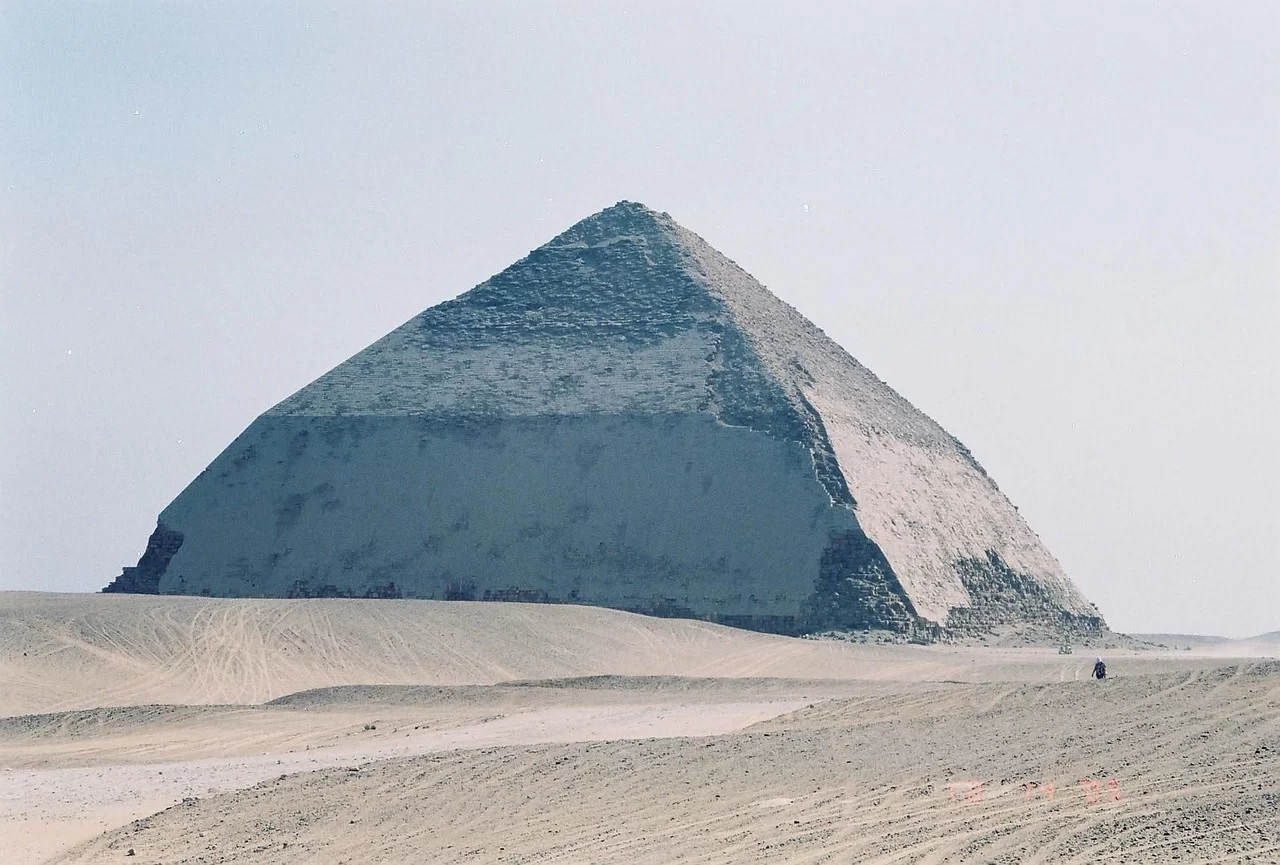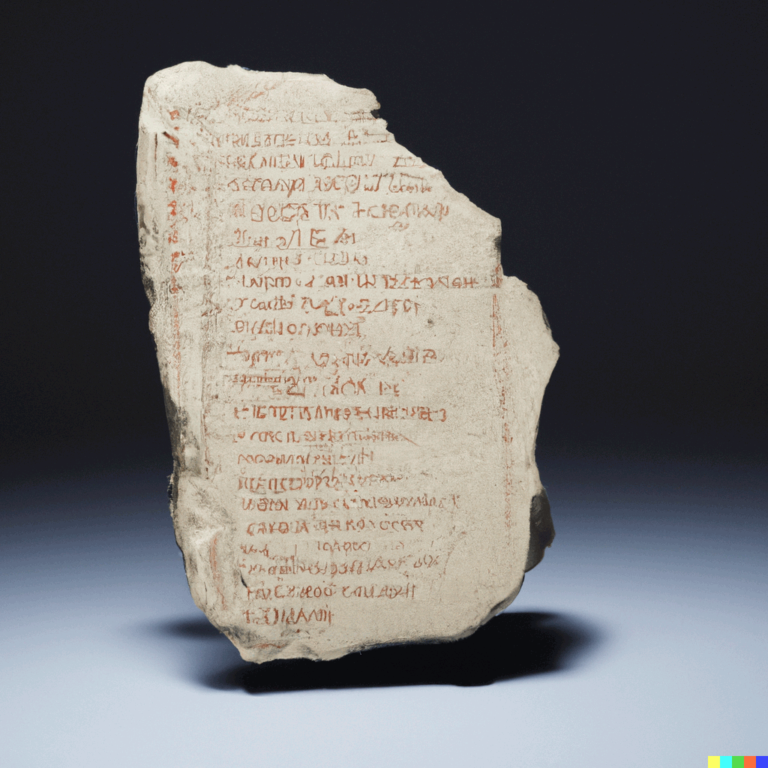The Bent Pyramid of Dahshur – Mystery of its Unique Design

The Bent Pyramid is one of ancient Egypt’s most unique and fascinating pyramids. It is located in Dahshur, a desert necropolis on the Nile River’s west bank. The Pyramid bent was built during the reign of Pharaoh Sneferu, the father of Khufu, the builder of the Great Pyramid of Giza. What sets the Bent Pyramid apart from other pyramids in Egypt is its bent shape, with a sudden change of angle halfway up the pyramid.
This unusual shape has puzzled historians, architects, and Egyptologists for centuries. It led to many theories and debates about its design and construction. The Bent Pyramid is just one of the many astonishing pyramids found in Egypt. These structures continue to fascinate us today, thousands of years after their construction.
But how did ancient Egyptians build such incredible structures? What were their secrets to success? For a closer look at the methods and techniques used to construct the pyramids, check out our article on the Construction of the Pyramids of Egypt. By exploring the history and engineering of these remarkable buildings. You can gain a deeper appreciation for ancient Egyptian architecture’s sheer scale and complexity.
Pharaoh Sneferu
The Bent Pyramid of Sneferu was built during the reign of Pharaoh Sneferu. He was the first ruler of the Fourth Dynasty of ancient Egypt.
The Bent Pyramid was the first attempt by Sneferu to build a true pyramid with smooth, straight sides. His earlier attempts, such as the Meidum Pyramid, were stepped pyramids with a series of flat platforms. However, the construction of the Bent Pyramid did not go as planned. The builders had to change the angle of the pyramid’s slope midway through the construction, resulting in its distinctive bent shape.
Despite this setback, Sneferu continued experimenting with pyramid construction and built the Red Pyramid, the first true pyramid with smooth sides and a constant angle. This pyramid is located not far from the Bent Pyramid and is considered one of the most impressive pyramids in Egypt.
The Pyramid’s Unusual Shape

The Bent Pyramid’s unusual shape is one of its most remarkable features. The pyramid starts with a steep 54-degree angle but suddenly changes to a shallower angle of 43 degrees at approximately 49 meters. This abrupt shift in the pyramid’s angle creates a visible “bend” in the structure, which is the source of its name.
The pyramid is massive, standing at over 100 meters (330 feet) tall, and covers an area of 144,000 square meters (1.5 million square feet). It is one of the largest pyramids in Egypt.
Unlike most pyramids, which are oriented to face the true north, the Bent Pyramid is oriented slightly to the east. This deviation in alignment has led some experts to speculate that it was intentional. To align the pyramid with a particular star or to correspond with other important celestial events.
Smaller pyramids and other structures surround the Bent Pyramid, including a mortuary temple and a causeway. These structures were likely used for religious and ceremonial purposes and provided a glimpse into the daily life and customs of the ancient Egyptians.
Theories on the Reason for the Pyramid Bent Shape
The Bent Pyramid’s bent shape has intrigued scholars and Egyptologists for centuries. Many theories have been put forward to explain the reason for its unique design. Here are some of the most widely accepted theories:
1. Construction Stability Theory:
According to this theory, the builders of the pyramid may have realized that the original angle of the pyramid was too steep and would cause structural instability. The angle was changed to a shallower slope to prevent the pyramid from collapsing during construction.
2. Architectural Innovation Theory:
This theory proposes that the Bent Pyramid’s design was a deliberate innovation by the architects to create a unique and impressive monument that would stand out from other pyramids.
3. Religious Significance Theory:
Some scholars believe that the bent shape of the pyramid was not accidental but had religious significance. They suggest that the pyramid’s shape represents the rays of the sun and the pharaoh’s journey to the afterlife.
4. Astronomical Alignment Theory:
Another theory suggests that the Bent Pyramid dahshur was designed to align with certain astronomical phenomena. Such as the position of the stars or the movement of the sun.
Construction Techniques and Methods Used in the bent Pyramid

The construction techniques used in the Bent Pyramid reflect the remarkable skills and knowledge of the ancient Egyptians. Despite the pyramid’s unusual shape, its construction was a remarkable achievement that continues to fascinate and inspire scholars and visitors today.
1. Limestone Blocks:
Like other ancient Egyptian pyramids, the Bent Pyramid was built using large blocks of limestone. The blocks were quarried from nearby hills and transported to the construction site using sleds and ramps.
2. Mortar:
The ancient Egyptians used mortar made from gypsum, clay, and water to bind the limestone blocks together. The mortar was poured into the gaps between the blocks to create a strong and durable structure.
3. Internal Chambers:
Like other pyramids of its time, the Bent Pyramid contained several internal chambers. The chambers were constructed using large limestone blocks and were designed to withstand the weight of the pyramid above. They were used for religious and funerary purposes.
4. Corbelled Vaulting:
The Bent Pyramid was one of the first pyramids to use corbelled vaulting in its internal chambers. This technique involves placing layers of stone blocks on top of each other, each layer slightly offset from the one below, until the blocks meet at the top to form a vaulted ceiling.
5. Pyramidion:
The Bent Pyramid originally had a pyramidion, a small pyramid-shaped capstone placed at the top. The pyramid was made of solid granite and is believed to symbolize the pharaoh’s power and authority.
While the Bent Pyramid stands as a testament to the incredible construction techniques, there are other remarkable feats of engineering from different parts of the world. One such example is the Passages of the Mammoth Cave in Kentucky. The cave system boasts an intricate network of passages and chambers formed over millions of years through natural processes.
Comparison with Other Pyramids Built during the Old Kingdom Period

The Bent Pyramid of Sneferu is one of Egypt’s most intriguing pyramids, not just because of its unique shape. At the same time, other pyramids from the Old Kingdom period have a straight-sided design. The Bent Pyramid features a sudden change in angle halfway up the pyramid’s height. This unusual shape has sparked much curiosity among scholars and visitors alike.
But what sets the Bent Pyramid apart from other pyramids of its time is not just its shape. It also the advanced construction techniques used in its construction. The ancient Egyptians used sophisticated methods to quarry the large blocks of limestone used in the pyramid’s construction.
The ancient Egyptians used corbelled vaulting inside the pyramid to create internal chambers. This was a remarkable engineering feat that demonstrated the incredible skills of the ancient Egyptians.
Despite the differences in its design, the Bent Pyramid shared many similarities with other pyramids built during the Old Kingdom period. For example, it was surrounded by a large funerary complex that included temples, causeways, and smaller pyramids for the pharaoh’s family. These complexes were designed to honor the pharaoh and ensure their safe passage to the afterlife.






